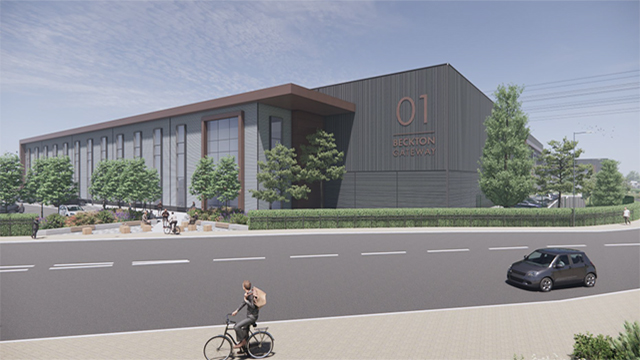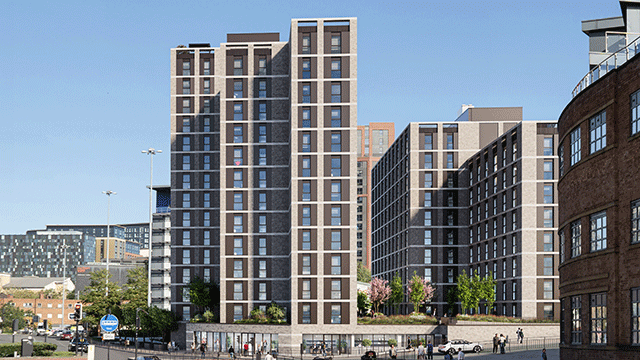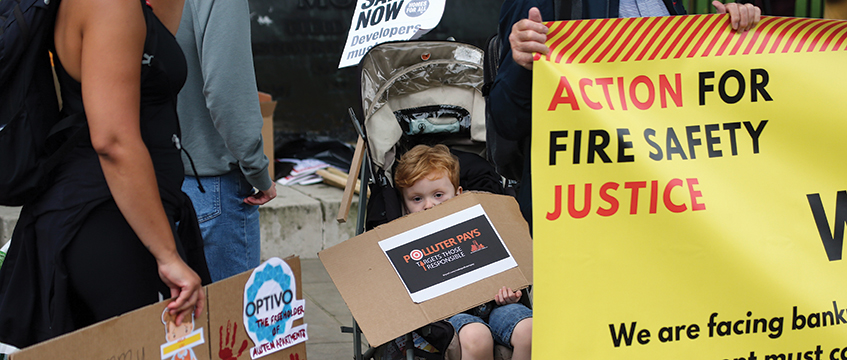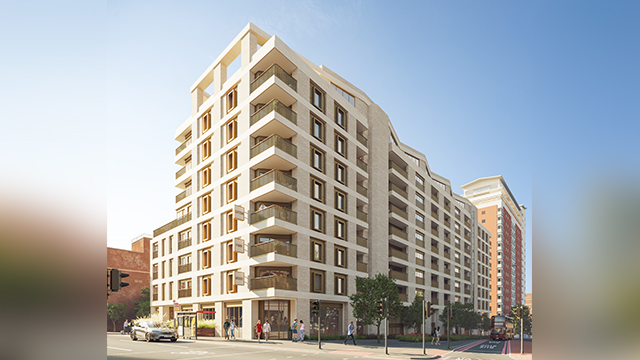Major breweries,fast-food operators and restaurateurs are competing for prime sites, hoping that the fashion for eating out becomes a trend.By Angela Jameson.
From pickled, skinned cows’ heads at Marco Pierre White’s latest London restaurant, Quo Vadis, to brewing-made-hip at Manchester new comer Oliver Peyton’s Mash & Air, restaurants are fashionable. But while the punters are desperate to see, and be seen at, the trendiest eateries, the industry is hoping that the boom will become a trend.
During 1996, UK consumers spent around £20.9bn on eating out. According to the Henley Centre for Forecasting, this figure is set to grow massively, by 42% in the next four years.
While the health of the sector is epitomised by trendsetting upmarket restaurants, such as Sir Terence Conran’s Mezzo, Quaglino’s and soon-to-open Bluebird restaurant, the chain restaurants have the greatest profit potential. The most successful restaurateurs are banking on the mid-market casual dining sector rather than the fickle fashion crowd.
Dining out in the UK is predicted to follow US trends, where the average consumer eats out three times a week. Eating out is now an everyday activity, a matter of convenience, rather than an occasional treat.
Most of last year’s high-profile corporate activity was in this market sector, notably Whitbread’s purchases of both Pelican and BrightReasons, for £133m and £46m respectively.
The economies of scale behind such in-vestments are enormous. According to sector analysts at Kleinwort Benson, every £5m spent on starting a designer restaurant could open 17 Café Rouges or 15 Pizza Expresses.
Competition
The competition for casual diners in the mid-spend brasserie market – where Pelican group, with its Café Rouge and Dôme brands, Pierre Victoire, PizzaExpress and City Centre Restaurants are all battling – has resulted in intense rivalry for sites.
At the same time, the brewers and pub operators are competing between themselves, and with some restaurant groups, for larger sites.
Many of the brands they are seeking to grow have strong food offerings. But while bars such as Slug & Lettuce, Pitcher & Piano and All Bar One use food to attract professional and female customers, 70% of turnover is still from wet sales.
All these factors mean that the restaurant sector – traditionally characterised as fragmented, with most businesses independently owned – is becoming one of the most dy-namic in the UK catering industry.
Further acquisitions are possible. PizzaExpress’s share price continues to climb, and the high-profile fish-and-chip restaurant brand Harry Ramsden’s has been suggested as a possible target for bids.
Today’s mid-market sector has been shaped by the emergence, at the beginning of the 1990s, of a number of smaller dedicated rest-aurant companies. These public quoted companies, which include PizzaExpress, Pelican and Groupe Chez Gerard, awakened the City to the sector’s potential for growth and profits.
New concepts
City Centre Restaurants is one such group. Having acquired a number of prominent High Street sites, it is now reducing its dependency on its Deep Pan Pizza and Garfunkel’s restaurants by converting many of them into Caffe Uno’s.
The company is using some of its 241 restaurants to develop new concepts, such as Frankie & Benny’s, an Italian American diner, and the Fraternity House, an all-day cafe-bar. The group is looking to open about 40 restaurants a year for the next three years.
PizzaExpress is no newcomer to the UK, having celebrated its 30th birthday in 1995. It has, however, grown considerably in the past two years and has, for the first time, moved beyond its Greater London heartland to the North of England and Scotland, and even further to California, Cyprus and India. After buying back 29 franchised units last year, the company now owns 119 restaurants and plans to open 25 a year until it operates 250.
My Kinda Town, which has already carved a successful overseas franchising operation, was the last significant takeover target of 1996. Commercial radio operator Capital Radio saw the potential of the sector during its joint venture with My Kinda Town’s radio-themed restaurant.
Having merged with the restaurateur, the group is seeking sites for further radio cafes in its catchment areas of Birmingham and the South Coast. Another brand, Henry J Bean’s, is also likely to grow with sites being sought in key cities.
Finally, Whitbread, the group which has changed the face of the British restaurant market in the past year, now comprises four restaurant groups – Pelican, BrightReasons, Pizza Hut and TGI Friday’s. All four will expand in 1997, although each group has con-siderable autonomy, especially over site acquisition.
Pelican’s flagship brand, Café Rouge, has opened 10 units since the deal, taking it to 113. Another 30 sites will open during the coming year, and a total of 300 Café Rouges are planned.
The Dôme brand, which now numbers 14, is also set to grow by 10 units a year. In addition, Whitbread is keen to grow the nine-strong Italian brand, Mamma Amalfi’s.
The group’s Bright Reason’s subsidiary plans to open at least 35 more Bella Pasta units. But Pizzaland will disappear from the High Street as a result of Whitbread’s joint venture with PepsiCo to operate Pizza Hut in the UK. The Pizzaland sites will be cherry-picked by Whitbread’s other brands, and 25 have already been sold to Pizza Hut. At the same time, BrightReason’s premium pizza brand, Pizza Piazza, is about to be sold.
TGI Friday’s, the 23-strong American-themed group located mainly on out-of-town sites and retail/leisure parks, is also gearing up for expansion. TGIF’s managing director, Mike Johnson, has successfully introduced smaller units, seating 150 rather 250. This shift, which makes opening in secondary cities and towns possible, is likely to lead to the company operating 30 restaurants by 2000.
Whitbread’s operation of Pizza Hut has, using television promotion of the brand and its new product, stuffed crust pizza, revived the chain. With Pizzaland disappearing, the way is clear for Pizza Hut to expand from the 274 full-service restaurants and 100 delivery kiosks it has today to a planned 500 outlets by 2000.
Fast food still dominates the eating-out market. Market-leader McDonald’s, which now operates 756 restaurants compared with 197 in 1985, is committed to opening in more locations throughout the UK.
Its plan to open 100 outlets a year for the next three years flows from its belief that the UK market is far from saturated. In the UK there is one McDonald’s for every 85,000people, well below the ratio of one for every 23,000 in the US. To achieve its targets, McDonald’s is opening more drive-thru sites and retail park restaurants. It is also keen to open in non-traditional sites, such as on ferries and at football grounds.
However, McDonald’s deal with the former Forte motorway service brand, Welcome Break, which could have given it access to 26 motorway sites, is now under negotiation with Welcome Break’s new owner, Investcorp.
Family market
Burger King, McDonald’s nearest rival, is lagging behind. Owned by Grand Metropolitan, there are now 420 BK restaurants in the UK, 80% of which are franchised. Another 100 will be opened this year. An agreement with contract catering giant, Compass, has ensured considerable growth in non-High Street sites, such as railway stations and airports.
KFC, owned by the US food and drink giant PepsiCo, has raised its promotional activities in the past two years and has worked hard to attract fam-ilies. It has 400 outlets and is looking to have 600 by 2001. It is targeting drive-thrus, but has not ruled out more High Street and retail park outlets.
Considering the planned level of corporate activity in the next three years, restaurateurs must be wary of getting into competitive bidding and paying over the odds for individual sites. Amid warnings of spiralling prices in the capital, high-profile casualties are predicted.
Unfortunately, it is the traditional restaurateurs – the entrepreneurs and independent operators, rather than the corporates – who are most likely to get their fingers burned.
Angela Jameson is a reporter on Caterer & Hotelkeeper.
For further information contact Caterer & Hotelkeeper on 0181 652 8680










